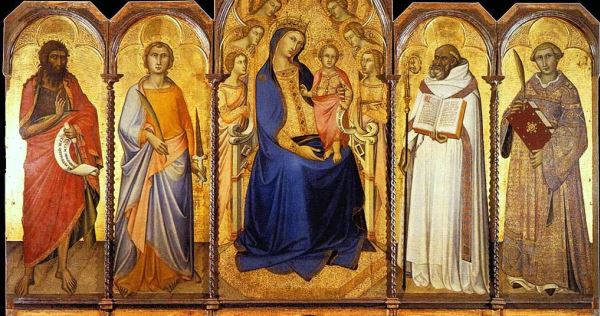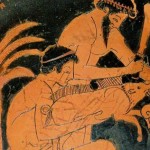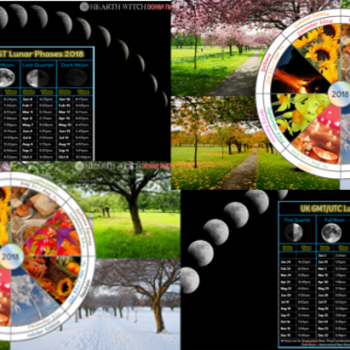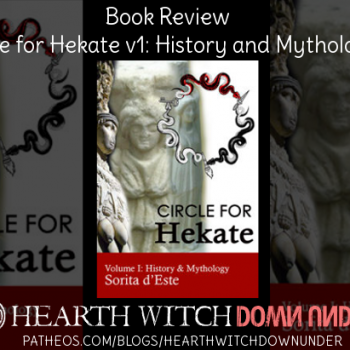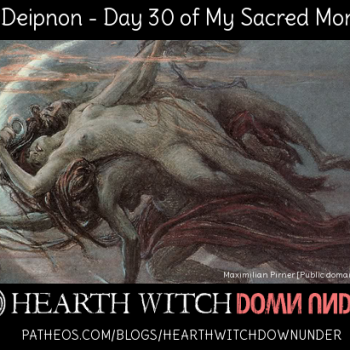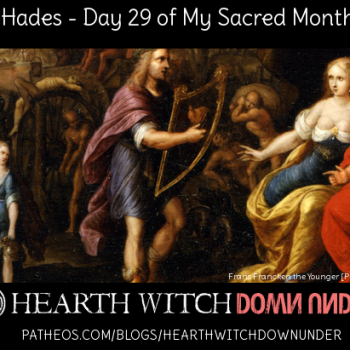When faced with the existence of the label “Christian Witch” or “Christo Witch” or any variation therein, many Pagans and Witches have exactly the same initial reaction – and it’s not a nice one. The most common, not too awful, words you will see or hear flung around in reaction to Christian Witchcraft are “contradiction” and “oxymoron”.
The idea of a witch also being Christian – ie. Of the faith that once spent centuries burning women for being maybe witches – does indeed seem like a contradiction and an oxymoron. How can someone be of a religion that hates witchcraft, whilst also practising witchcraft? There is also the argument that to be a real Witch (and by extension, Pagan) one cannot believe in and certainly cannot honour, worship or work with, Christian deities and entities.
But if you spend more than a moment thinking about it…
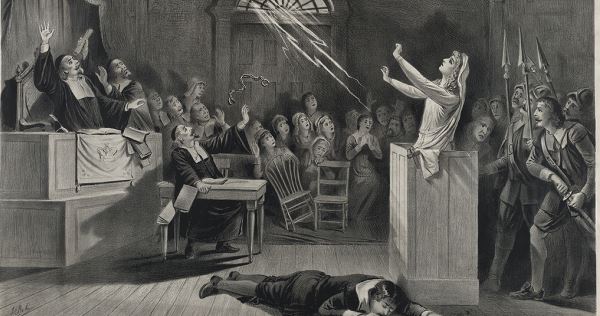
Goetia
We’ll begin with the most obvious of all, Goetia and its appearance in modern Witchcraft – which is actually fairly common. But even if it isn’t common it is commonly accepted within Witchcraft. And what is Goetia? In simplistic terms, Goetia is sorcery wherein you summon or work with demons and angels – Christian ones for the most part.
Now, Goetia isn’t itself considered to be witchcraft – not by everyone anyway. However it is something that is practiced by some Witches and it is an accepted thing within Witchcraft. A Witch who practices Goetia, or really any form of sorcery, is not considered a fake witch or contradictory or oxymoronic.
But Goetia is, whether you like to admit it or not, a Christian form of magic because it relies almost exclusively on Christian entities. Thus, to practice to Goetia you must believe in Christian things and must work with Christian entities in some way. You will also use and rely on Christian symbols, Christian language and many other things that are Christian.
If Goetia is an accepted practice within Witchcraft, then why is plain and simple Christian Witchcraft considered contradictory and oxymoronic?
Santeria
Santeria is a hard one to pin down because it is, well it’s just hard. It’s a syncretic religion, which is like our own eclectic Paganisms, but it’s more specific than that. Santeria is, generally, a blending of three or more religions – Caribbean, Yoruba and Catholicism. It shares some elements with Vodoun, with its honouring of the orishas and indeed this is where a lot of the syncretism occurs – the orishas are generally merged with Catholic saints.
I, honestly, don’t know a lot about it so I won’t say much more because like as not I will be wrong! However, I do know that it is both Pagan and not Pagan. It depends on who you talk to. Some people who practice Santeria also identify as big-P Pagan, but some do not. And yes, there are big-P Pagans who incorporate Santeria into their practice, and they generally aren’t given a sideways glance when they mention it (except maybe via accusations of appropriation, but that’s another topic entirely).
No matter how you look at it though, it is a blending of pagan religions and Christianity – thus it shows us how Christianity and pagan religions can be merged quite well. If it is good for Santeria, why is it bad for Witchcraft?
Qabbala
Qabbala is an esoteric magical tradition that originates with the Jewish Kabbalah. In itself it is no longer Judaic, but it does, of course, still have traces of the original tradition within. As a western tradition is has been used in multiple religions and cultures and has evolved over time. Interestingly it had its stint of popularity within Christianity itself, where many new ideas and systems were incorporated into it.
In Paganism the most notable usage of Qabbala is in the Hermetic Order of the Golden Dawn, which is, plain and simple, one of the main progenitors of our modern witchcraft and Paganism and has influenced a large number of our traditions. And of course the tradition of using Qabbala was continued and popularised further through Dion Fortune and Aleister Crowley.
Two of the most adulated people within our modern Witchcraft practiced this system that partially originated in Judaism and was further evolved by Christianity. Interesting, wot?
The Saints
Not just confined to Santeria, the Saints are actually honoured and/or utilised by a fairly significant number of Witches and Pagans and the like. For some they are seen as a kind of boundary between ancient Paganism and overt Christianity. Given that quite a few of the Saints were Pagan before converting to Christianity, it stands to reason they can serve as an intermediary between the two (well more than two) traditions.
Much of the lore surrounding many of the Saints includes some pretty fantastical things, miraculous births and childhoods, as well as feats of wonder throughout the lives – even some that happened to/by the pagan ones before they converted. Some of them are attributed with certain forms of magic.
The most notable of those honoured in Paganism and Witchcraft is perhaps Saint Bridget. This stands to reason, her conflation with or evolution from the Goddess Brigid does make her a likely one for Celtic Pagans to look at. Given that a lot of our Celtic history and lore is only preserved through Christian writers, a lot of what is known about the Goddess must necessarily come through what we know about the Saint. Whatever the reasons, the conflation of the two and honouring the Saint herself is generally deemed acceptable by the majority of Pagans and Witches.
Conclusion
This isn’t all of the Christian elements that can be found in, and are deemed acceptable within, Paganism and Witchcraft – these are just the ones that came to the top of my head. But I think these are enough to go with for now, to show us that when it comes to merging Christianity with various Pagan traditions and religions, especially Witchcraft, it is actually more common than people seem to realise. I wonder how many of the detractors actually practice some form of these themselves – or idolise big name Pagans, Witches and the like who did/do so.
And to be really annoying I could point out that the most recent definition of the word “witch” before we came along and ruined everything, was ‘someone who worships the devil and practices Godless magic’ or something similar. Given that the Devil is a Christian entity, this would mean that witchcraft can only be practiced by those who believe in and work with Christian entities. Thus, witch = Christian, just not a very good Christian.
And that is the sad thing about all of this. Christian Witches today have no supporters. In a Facebook group I am in someone asked the question, “What is the first thing you think of when confronted with the term “Christian Witch”? My answer was, “Unfortunately a person who will persecuted by both Christians and other Witches and Pagans alike.”
I probably should have added, in the case of Pagans and Witches persecuting them, it is unfairly, hypocritically and contradictorily.
Because as we can see, Christianity in Witchcraft is actually quite normal.
